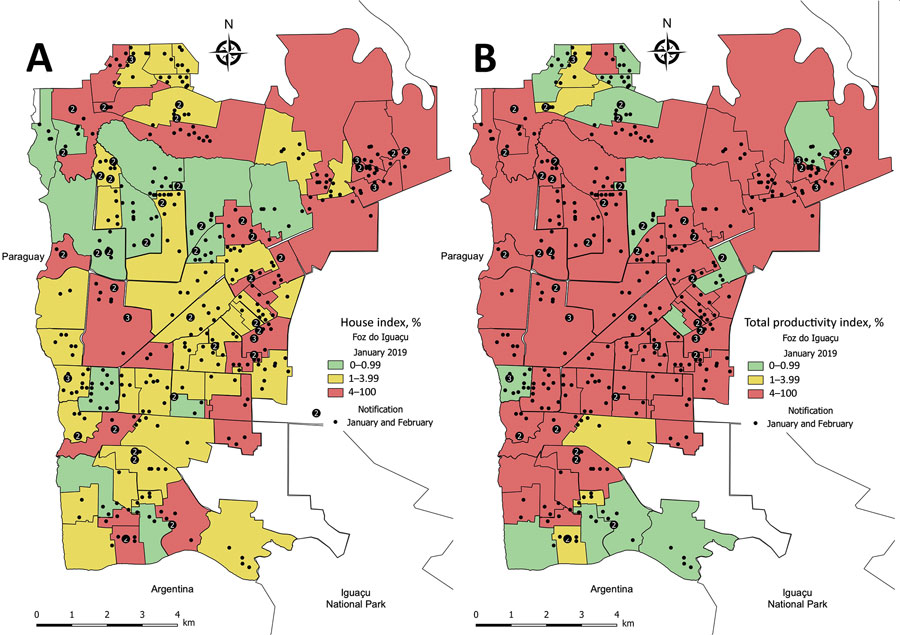Volume 28, Number 4—April 2022
Synopsis
Citywide Integrated Aedes aegypti Mosquito Surveillance as Early Warning System for Arbovirus Transmission, Brazil
Figure 3

Figure 3. Choropleth maps comparing larval and adult Aedes aegypti mosquito infestation indices and dengue notifications in 73 urban areas of Foz do Iguaçu, Brazil, January–February 2019. A) Traditional house index (HI) calculated from larval surveys; B) trap positivity index (TPI) calculated from dengue virus positivity among captured adult Ae. aegypti mosquitoes. Dots represent dengue notification and numbers inside dots represent the total of dengue cases reported on that city block.
Page created: February 16, 2022
Page updated: March 19, 2022
Page reviewed: March 19, 2022
The conclusions, findings, and opinions expressed by authors contributing to this journal do not necessarily reflect the official position of the U.S. Department of Health and Human Services, the Public Health Service, the Centers for Disease Control and Prevention, or the authors' affiliated institutions. Use of trade names is for identification only and does not imply endorsement by any of the groups named above.